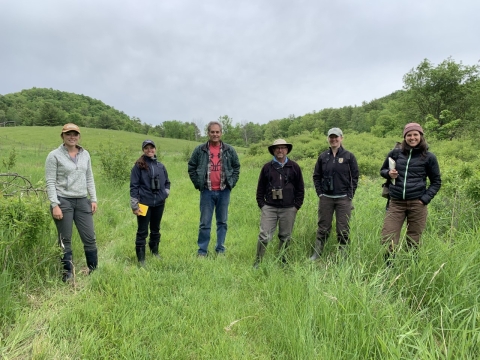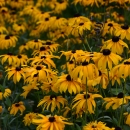The Lake Champlain Fish and Wildlife Conservation Office works regularly with over 50 local, state and regional partner organizations to further the cooperative goals of conservation and restoration. Local communities and landowners are the lifeblood of voluntary fish and wildlife conservation. Conservation partnerships are a vital link between local communities and the USFWS and are critical to the success of the USFWS and state and local partners.
Lake Champlain Basin Program
The Lake Champlain Basin Program (LCBP) is a Congressionally-designated initiative to restore and protect Lake Champlain and its watershed. They work with partners in New York, Vermont, and Québec to coordinate and fund efforts to address challenges in the areas of phosphorus pollution, toxic substances, biodiversity, aquatic invasive species invasive species
An invasive species is any plant or animal that has spread or been introduced into a new area where they are, or could, cause harm to the environment, economy, or human, animal, or plant health. Their unwelcome presence can destroy ecosystems and cost millions of dollars.
Learn more about invasive species , and climate change climate change
Climate change includes both global warming driven by human-induced emissions of greenhouse gases and the resulting large-scale shifts in weather patterns. Though there have been previous periods of climatic change, since the mid-20th century humans have had an unprecedented impact on Earth's climate system and caused change on a global scale.
Learn more about climate change . The LCBP also administers the Champlain Valley National Heritage Partnership, which builds appreciation and improves stewardship of the region’s rich cultural resources by interpreting and promoting its history. The U.S. Fish and Wildlife Service is a member of the Steering Committee, Technical Advisory Committee, and Aquatic Nuisance Species Rapid Response Task Force helping ensure that fish, wildlife and habitat are integrated into LCBP priorities.
Vermont Agricultural Water Quality Partnership
The Vermont Agricultural Water Quality Partnership seeks to improve agricultural water quality in Vermont by coordinating partner efforts to provide education, technical and financial assistance to the farming community.
Free VT Rivers
Free VT Rivers is a project of the Vermont Dam Task Force, a group of river and fish biologists, anglers, community members, freshwater advocates, conservation organizations, and state and federal regulators who are working to restore and reconnect our rivers to support thriving fish populations, improved recreational access, and a river's natural capacity to handle flooding.
Staying Connected Initiative
An international collaboration, the Staying Connected Initiative (SCI) seeks to conserve, restore, and enhance landscape connectivity across the Northern Appalachian/Acadian region of the U.S. and Canada for the benefit of nature and people. Sustaining connectivity safeguards native wildlife and plants from the impacts of habitat fragmentation and climate change, and supports human activities and values that are tied to the forested landscape. SCI unites its U.S. and Canadian partners to focus the tools of conservation science, land protection, community outreach, land use planning, transportation and policy to meet its mission.


